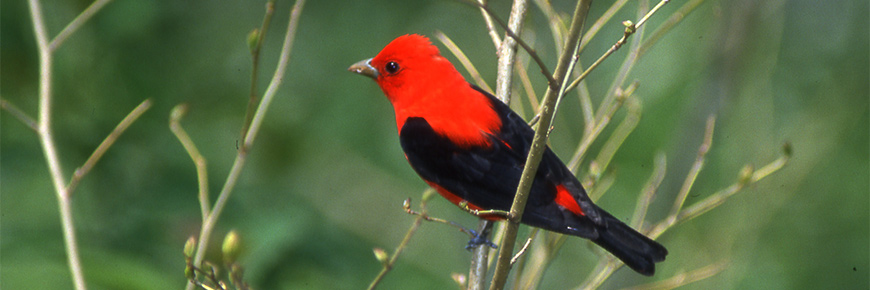
Songbird migration
Point Pelee National Park
Festival of Birds
Share the excitement of birding at Point Pelee National Park with thousands of enthusiasts celebrating the return of the spring birds at the Festival of Birds in May.
Spring migration
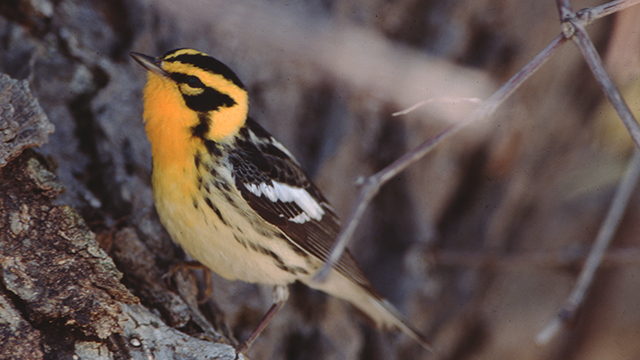
Spring migration can start as early as February at Point Pelee although it is not a steady flow of birds from the south. Migration progresses in several stages, and neotropic migrants (songbirds) usually arrive in intermittent waves starting in mid to late April, a pattern unique to eastern North America. Each of these stages tends to be fairly fast paced, especially the songbirds, motivated by the drive to move north to breeding grounds.
Most of the songbirds moving through Point Pelee in spring are nocturnal migrants. When they find themselves over Lake Erie near sunrise, they look for the nearest point of land to rest and refuel after flying up to two hundred kilometres in a night. Since the Point Pelee peninsula extends 20 kilometres into Lake Erie, it is often the first point of land they see, and the Tip is often buzzing with birds in the early morning.
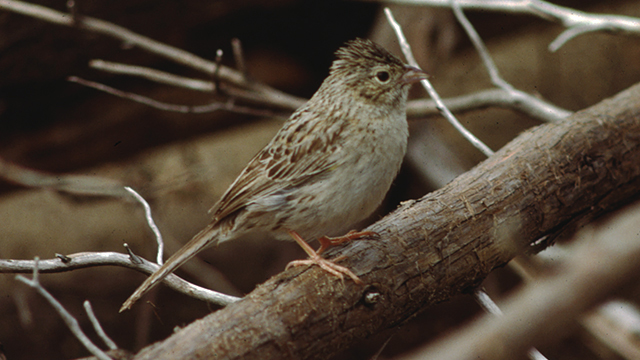
On rare occasions, you may witness a fallout of migrants in the park. Fallouts or groundings of songbirds occur when a warm weather front advancing from the south or southeast meets a cold weather front moving in from the north or northwest. Birds will descend when the two fronts meet at ground level, or when the birds flying on a warm front override a cold front. Grounding of migrants, while amazing, is usually very for stressful birds, and birders need to use caution during these situations.
Due to the park’s central location on the continent, it is often host to rare species, not typically found in this part of Canada. For many birders, scouring an area as small as Point Pelee results in the discovery of rare birds each spring. Some past sightings, like Hermit Warbler, Black Swift and Cassin’s Sparrow can be once-in-a-lifetime opportunities.
Fall migration
Fall migration can begin as early as the end of June. The migration is a much slower pace than spring – species like Yellow-rumped Warbler and Greater Yellowlegs have migration windows of four to five months each.
Even though the number of birds moving through the park in fall is doubled with the addition of the young of the year, they often go undetected in their duller winter plumage and quieted voices.
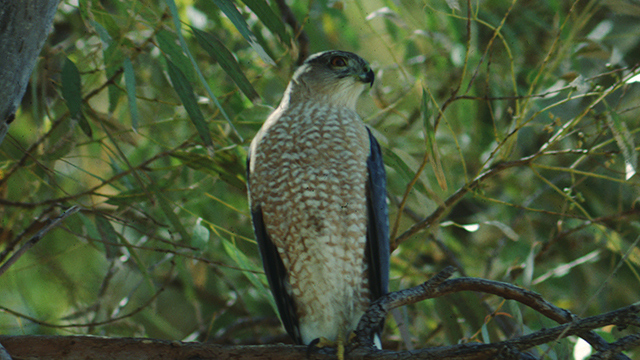
Fall storms, especially hurricanes, have caused extreme rarities to appear. The few days following the passing of a hurricane or tropical depression through the area are usually the most profitable.
Like spring, fall migrants generally arrive in intermittent waves. Early morning, near dawn, is the best time to assess whether a wave has arrived during the night. As there are many birds of prey moving through the area, songbirds tend to be very active in the early morning hours before the birds of prey are actively hunting.
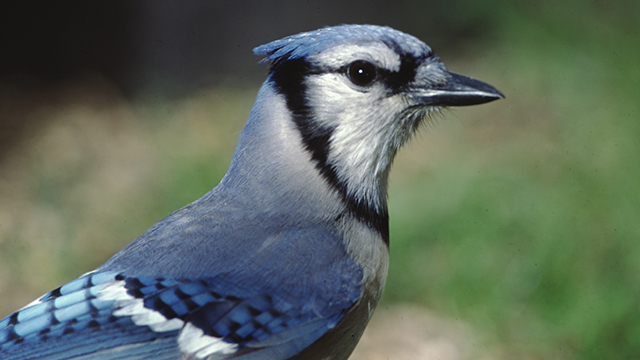
Diurnal migrants are much more visible at Point Pelee during the fall, as they use landscapes to help them navigate. Most of these migrants will fly south until they reach the north shore of Lake Erie and follow the shoreline. The shape of the peninsula funnels birds to the tip, where they will either cross the lake, or continue west along the shoreline to cross at the south end of the Detroit River. The best days to observe these migrants at the Tip are those with light south winds, high humidity and generally hazy or overcast conditions. Large groups of Blue Jays will often attempt to traverse the lake, but most times turn around and return to the safety of land.
The Tip is also an excellent spot to look for pelagic species, like jaegers and kittiwakes moving through the Great Lakes from arctic breeding grounds. The best days for observation have southwest winds, as they push birds in the middle of the lake to the shore, where they often pass the Tip of the park.
Related links
- Date modified :